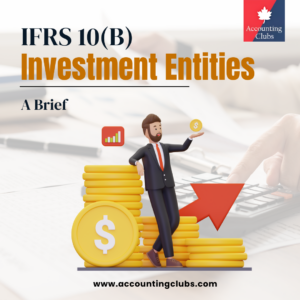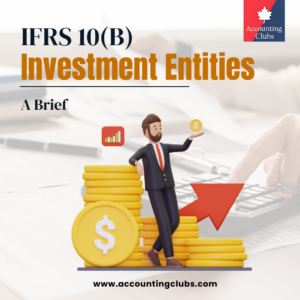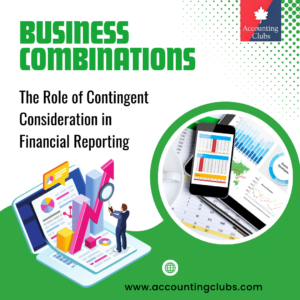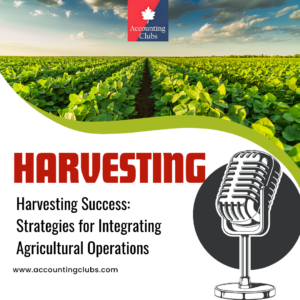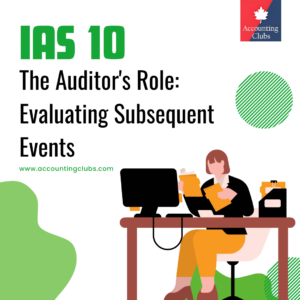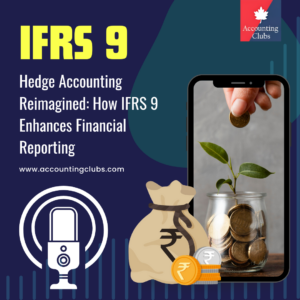Chapter 1: Introduction and Identification
This chapter addresses the IFRS requirements for intangible assets as follows:
- Initial recognition of intangible assets.
- Initial measurement of intangible assets.
- Measurement subsequent to initial recognition, including the cost and revaluation models.
- Impairment of intangible assets is addressed by IAS 36.
- Fair value is addressed in IFRS 13.
Initial recognition and measurement, subsequent measurement (including revaluation, depreciation and impairment), derecognition and disclosure requirements are addressed in IAS 38.
Borrowing costs directly attributable to the acquisition, construction or production of a qualifying asset form part of the cost of this asset. Intangible assets could be qualifying assets in some circumstances.
Scope
An intangible asset is defined as “an identifiable non-monetary asset without physical substance”.
The standard does not apply to:
- Intangible assets held for sale in the ordinary course of business, such as inventories under IAS 2 and assets from contracts with customers that are recognised in accordance with IFRS 15.
- Deferred tax assets under IAS 12.
- Assets arising from leases within the scope of IFRS 16.
- Assets arising from employee benefits under IAS 19.
- Goodwill arising from a business combination under IFRS 3.
- Deferred acquisition costs and intangible assets arise from an insurer‘s contractual rights under insurance contracts that are within the scope of IFRS 4.
- Deferred acquisition costs that are not within the scope of IFRS 4 are in the scope of IAS 38.
- The IAS 38 disclosure requirements apply to all such intangible assets.
- Intangible assets are classified as held-for-sale under IFRS 5.
- Financial assets as defined in IAS 32.
- Exploration and evaluation assets under IFRS 6 and expenditure on the development and extraction of minerals, oil, natural gas and similar non-regenerative resources. The recognition criteria in IAS 38 for internally generated costs will need to be applied once the technical feasibility and commercial viability of extracting the nonregenerative resource has been determined (the development phase).
Expenditure on advertising, training, start-up and research and development (R&D) are within the scope of IAS 38. R&D activities are directed to the development of knowledge. These activities might result in a physical asset, but the physical element of the asset is secondary to its intangible element. Development expenditure might result, in some circumstances, in the creation of an intangible asset.
The underlying asset in a lease might be intangible in nature. An intangible asset in a lease transaction might be accounted for under IFRS 16, depending on the type of intangible asset and whether the entity is the lessee or the lessor.
Rights held by a lessee under licensing agreements for items such as films, videos, plays, manuscripts, patents and copyrights are within the scope of IAS 38 and are excluded from the scope of IAS 17/IFRS 16.
Identification of intangible assets
Intangible asset – definition
An intangible asset is defined as an identifiable non-monetary asset without physical substance.
The key components of this definition are:
- identifiability; and
- asset (the definition of which encompasses control).
Identifiability
Identifiability is the characteristic that conceptually distinguishes other intangible assets from goodwill. In a business combination, it is often difficult to determine whether an intangible item qualifies for recognition as an intangible asset or whether it is merely part of goodwill. The word ‘identifiable’ in the definition is intended to help in such situations.
An asset is identifiable if either:
- it is separable, i.e., it is capable of being separated or divided from the entity and sold, transferred, licensed, rented or exchanged, either individually or together with a related contract, identifiable asset or liability, regardless of whether the entity intends to do so; or
- it arises from contractual or other legal rights, regardless of whether those rights are transferable or separable from the entity or from other rights and obligations.
The Board has concluded that all separable assets, as defined in IAS 38, are identifiable. Therefore, any intangible asset that has that characteristic and that is acquired in a business combination should be recognised as an asset separate from goodwill.
However, separability is not the only indication of identifiability. IAS 38 is clear that, while a separable asset meets the identifiability criterion, there are other ways to meet that criterion. For example, a legal right, such as a broadcasting licence, may give rise to future benefits that are ‘identifiable’ under IAS 38, even if they are not separable from the underlying broadcasting business because it is unlikely that the broadcasting licence could be sold without disposing of the underlying broadcasting business. Therefore, in a business combination, all intangible assets that arise from contractual or other legal rights, whether or not they are separable, should be identified as assets separate from goodwill.
The illustrative examples accompanying IFRS 3 provide several examples of items acquired in a business combination that meet the definition of an intangible asset. These examples are not exhaustive, but they do illustrate many of the more common items that arise in the circumstances of a business combination, and they provide a very useful framework for the determination of whether particular items qualify for recognition as intangible assets.
Asset (control)
Control – definition
An asset is defined as a resource controlled by an entity as a result of past events and from which future economic benefits are expected to flow to the entity. In the context of intangible assets, it is sometimes difficult to determine whether an entity can exert control over the expected future economic benefits. Control in this context means that the entity has the power to obtain the economic benefits that the asset will generate and to restrict the access of others to those benefits.
Note that the definition of an asset in IAS 38 was not revised following the revision of the definition of an asset in the Conceptual Framework for Financial Reporting issued in 2018.
Normally, control of an intangible asset is achieved through legal rights (e.g., a brand name is protected by a trademark, a publishing title by copyright, a licence by contract). Less frequently, an intangible asset may be controlled merely through custody (e.g., a product formula or intellectual property may be controlled simply by keeping it a secret from outsiders).
Assembled workforce
Certain intangible items of value to an entity may not be controlled by it. For example, it is unusual for an entity to have control over its employees – usually employee contracts can be terminated with a short period of notice and without penalty. Therefore, when a business combination is accounted for as an acquisition, the benefit of an assembled workforce is more likely to be treated as goodwill than as an intangible asset, because the workforce cannot normally be controlled (at least in the IAS 38 sense). This is consistent with IFRS 3 which only permits those identifiable assets acquired that meet the asset definition in the Conceptual Framework to be recognised at the acquisition date. For similar reasons, specific management or technical talent is unlikely to meet the definition of an intangible asset, unless it is protected by legal rights to use it and to obtain the future economic benefits expected from it, and it also meets the other parts of the definition.
Note that the definition of an asset in IAS 38 was not revised following the revision of the definition of an asset in the Conceptual Framework for Financial Reporting issued in 2018.
However, occasionally, an entity may be able to demonstrate that it has sufficient control to be able to capitalise an employee contract as an asset. For example, when a football club acquires a new player, the contract negotiated may give the club exclusive rights to use the player for a specified period of time, and the club may also be entitled to sell that contract to a third party.
Customer relationships and similar items
IAS 38 allows that customer relationships and similar items may meet the definition of intangible assets when either:
- they are protected or otherwise controlled by legal rights; or
- the ability to control the expected benefits flowing from the relationships, and the separability of the customer relationships, have been evidenced by exchange transactions for the same or similar non-contractual customer relationships (other than as part of a business combination).
Non-contractual customer relationships and similar items
An established customer base or market share is not usually controlled by the entity. There may be an expectation that customers will continue to buy from the entity but, usually, they are under no obligation to do so. Clearly, when the relationship is protected by a legal right, the entity has control over the future economic benefits. However, such control may also be evidenced when the entity has acquired a non-contractual customer relationship in a separate exchange transaction, or when there have been exchange transactions for similar relationships. Because these exchange transactions also provide evidence that the customer relationships are separable, such customer relationships meet the definition of an intangible asset.
In some industries, such as those providing mobile telephone services, one service provider may purchase subscriber bases of existing customers from another. The price paid for the subscriber bases usually exceeds the value of the existing contracts, the difference representing the expectation that existing subscribers will renew their contracts. The exchange transaction may provide sufficient evidence to enable the entity to recognise this difference as a separable intangible asset in its own right, even if the existing customers are under no obligation to renew their contracts. (However, this should not be confused with the situation when payments are made directly to customers to enter into a contract. Such contracts should be accounted for as consideration payable to a customer in accordance with IFRS 15.
Another example of a common scenario when a non-contractual relationship may qualify for recognition as a separate intangible asset is in a business combination when the acquiree has an established programme for customer award points to which the guidance in paragraphs IFRS 15 applies.
The illustrative examples accompanying IFRS 3 address various types of customer-related intangible assets acquired in a business combination and whether they meet the definition of an intangible asset.
Non-competition agreements
Non-competition agreements (NCAs) are often entered into in conjunction with a business combination and can be structured in a variety of ways. For example, a subsidiary and its parent (the vendor) may enter into an NCA prior to the subsidiary being sold to an unrelated third party. Alternatively, the acquirer may enter into an NCA with the vendor.
It is presumed for the purposes of the following discussion that a reliable valuation of an NCA can be obtained.
Consolidated financial statements
The illustrative examples accompanying IFRS 3 cite non-competition agreements as items that, when acquired in a business combination, meet the definition of an intangible asset because they arise from contractual or other legal rights. While they may not be separable assets, separability is not a necessary condition to satisfy the recognition criteria for intangible assets in IAS 38. Because they are contractual rights, NCAs should be recognised separately as intangible assets in the consolidated financial statements.
The value of an NCA will depend on a number of different factors, such as barriers to entry in the market in which the entities operate. For example, the existence of a customer list in the acquired entity alone does not indicate that the NCA is valuable.
When an NCA is recognised as a separate intangible asset, it forms part of the same cash-generating unit (or units) as the underlying assets of the acquired business to which it relates for the purposes of impairment testing in the consolidated financial statements.
Separate financial statements of acquirer
When the NCA is between the subsidiary and the vendor, the acquirer does not have the legal rights arising from the contract. In such circumstances, the acquirer should simply recognise an investment in a subsidiary in its separate financial statements (i.e., it should not recognise a separate intangible asset for the NCA).
When the NCA is between the acquirer and the vendor, the acquirer does have a separately identifiable legal right with respect to the NCA in addition to its investment in the subsidiary. The right has a value in the separate financial statements of the acquirer. Therefore, in these circumstances, the acquirer should recognise a separate intangible asset for the NCA in accordance with IAS 38 in addition to the investment in its subsidiary. If the NCA and the investment are acquired at the same time, which will usually be the case, it will be necessary to consider whether the amounts specified in the acquisition agreement/NCA are the appropriate amounts for inclusion in the financial statements. In some cases, a different allocation of the total amount payable between the two items may be necessary in order to reflect the substance of the transaction.
When an NCA is recognised as a separate intangible asset, the NCA and the investment in the subsidiary will be tested for impairment jointly.
Regulatory assets
The appropriate accounting for rate-regulated activities is the subject of a major IASB project; the Board has issued an interim Standard for first-time adopters of IFRS Standards, and a more comprehensive project is at the research stage.
Regulatory assets – example
Company X, an electricity producer, operates in Country B. Electricity producers in Country B are subject to government regulation of electricity charges. Company X has incurred operating losses in the two years ending 20X0 as a consequence of the regulatory pricing mechanism.
The government of Country B subsequently approves a regulatory agreement allowing the electricity producers to increase their prices in future years to offset losses incurred for the previous two years ending 20X0.
Company X should not recognise an asset and associated revenues at the end of 20X0 for the recovery of past operating losses through invoicing future consumption at higher prices. In order to recover operating losses incurred, electricity producers are required to produce electricity for their clients in the future. Even though it is arguable that electricity producers will recover the operating losses, Company X has not, at the end of 20X0, provided the service for which the customers will be paying and, therefore, the regulatory asset cannot be recognised because it does not qualify for recognition as an asset in accordance with the Conceptual Framework. Moreover, customers can choose not to purchase electricity from this producer even if electricity is produced. In other words, it is not just a matter of producing electricity for clients in the future but clients purchasing electricity.
Consequently, the authorisation given by the government to increase prices in the future is merely a pricing mechanism that regulates prices for the following periods, and does not give rise to an asset and additional revenue in the current period (i.e., 20X0). The recovery of the operating loss is included in the calculation of the price the regulated entity may charge to its customers and should be recognised only when such revenues are received or receivable.
Note that the definition of an asset in IAS 38 was not revised following the revision of the definition of an asset in the Conceptual Framework for Financial Reporting issued in 2018.
Customer’s right to receive access to the supplier’s software hosted on the cloud – example
Customer A enters into a ‘software as a service’ cloud computing arrangement in which it pays a fee in exchange for a right to receive access to the supplier’s application software for a specified term. The supplier’s software runs on cloud infrastructure managed and controlled by the supplier. Customer A accesses the software on an as needed basis over the internet or via a dedicated line. The contract does not convey to Customer A any rights over tangible assets.
Depending on facts and circumstances, the arrangement may result in Customer A receiving either:
- a software asset at the contract commencement date (because either the contract contains a software lease or Customer A otherwise obtains control of software at contract commencement date); or
- a service.
A software lease
IFRS 16 defines a lease as “a contract, or part of a contract, that conveys the right to use an asset (the underlying asset) for a period of time in exchange for consideration”. IFRS 16 explain that a contract conveys the right to use an asset if, throughout the period of use, the customer has both the right to obtain substantially all of the economic benefits from use of the asset (an identified asset) and the right to direct the use of that asset. A customer generally has the right to direct the use of an asset by having decision-making rights to change how and for what purpose the asset is used throughout the period of use. Accordingly, in a contract that contains a lease, the supplier has given up those decision-making rights and transferred them to the customer at the lease commencement date.
A right to receive future access to the supplier’s software running on the supplier’s cloud infrastructure does not in itself gives the customer any decision-making rights about how and for what purpose the software is used. The supplier would exercise those rights by, for example, deciding how and when to update or reconfigure the software, or deciding on which hardware (or infrastructure) the software will run.
Accordingly, if the contract conveys to Customer A only the right to receive access to the supplier’s application software over the contract term, the contract does not contain a software lease.
A software intangible asset
IAS 38 defines an intangible asset as “an identifiable non-monetary asset without physical substance”. It notes that an asset is a resource controlled by the entity. Applying IAS 38, Customer A controls an intangible asset if it has the power to obtain the future economic benefits flowing from the underlying resource and to restrict the access of others to those benefits.
If a contract conveys to Customer A only the right to receive access to the supplier’s application software over the contract term, Customer A does not receive a software intangible asset at the contract commencement date. A right to receive future access to the supplier’s software does not, at the contract commencement date, give the customer the power to obtain the future economic benefits flowing from the software itself and to restrict others’ access to those benefits.
Service
If the contract conveys to Customer A only the right to receive access to the supplier’s application software in the future, then it is a service contract. Customer A receives the service (i.e., the access to the software) over the contract term. If Customer A pays the supplier before it receives the service, that prepayment gives Customer A a right to future service and is an asset for Customer A.
This conclusion was confirmed by the IFRS Interpretations Committee in the March 2019 IFRIC Update.
If Customer A determines that the contract contains a software lease, it may either account for the lease under IFRS 16 or under IAS 38, as permitted by IFRS 16 and IAS 38.
Implementation costs incurred by a customer in connection with a right to receive access to a supplier’s software hosted on the cloud A customer entering into a ‘software as a service’ cloud computing arrangement will generally incur implementation costs, such as costs related to:
- preliminary project activities (e.g., research and assessment of the various cloud-based solutions);
- internal or external application development;
- data conversion; and
- training.
These costs will be recognised as an expense as incurred unless they either:
- are required to be included in the cost of a recognised asset. For example, this will be the case if:
- as discussed, the cloud computing arrangement results in the customer recognising an intangible asset or a right-of-use asset and the customer determines that implementation costs represent either directly attributable costs to be included in the cost of the intangible asset applying IAS 38, or initial direct costs to be included in the cost of the right-of-use asset applying IFRS 16; or
- the customer incurs costs to customise existing software of the customer to ensure compatibility with the cloud computing arrangement and determines that the criteria in IAS 38 are met. This may be the case if the costs result in new functionalities being added to the customer’s existing software; or
- meet the criteria to be recognised as an intangible asset in their own right. For example, this may be the case if the costs relate to the acquisition or development of software used:
- in the data transfer or conversion process. However, the resulting asset, if any, will likely have a short useful life corresponding to the data migration or conversion period; or
- in conjunction with the cloud computing arrangement (e.g., in-app extensions).
In all cases, a careful analysis of the requirements for the recognition of an intangible asset in IAS 38 will be required.
Applying IAS 38, the following expenditures do not meet the requirements to form part of the cost of an intangible asset and should be recognised as an expense as incurred:
- research and feasibility assessment (IAS 38);
- data migration and conversion, other than software acquired/developed for that purpose (these are akin to start-up costs described in IAS 38); and
- training activities (IAS 38).
If the entity pays for implementation related services in advance of receiving the services, the entity should recognise a prepayment asset. When the services are received, the entity should assess the nature of those services to determine whether the related costs should be recognised either as an expense or as an asset following the principles described above.
This guidance does not reflect the agenda decision of the IFRS Interpretations Committee in March 2021 in respect of ‘Configuration or Customisation Costs in a Cloud Computing Arrangement’.
Carbon offsets acquired for voluntary offsetting of carbon dioxide equivalent (CO2e) emissions
Carbon offsets were developed under the Kyoto Protocol as a means of providing organisations that emit CO2e with a way of offsetting their emissions. There are different mechanisms for creating carbon offsets, such as planting trees or CO2e capture.
One mechanism for creating carbon offsets is projects which reduce carbon emissions through substitution, such as creating alternative power sources or improving the efficiency of cooking equipment. The projects are able to sell carbon offsets created by their activities. Without the funding provided from the sale of the carbon offsets, these projects may not be economically viable. The pricing of the carbon offsets varies depending on the characteristics of the project, such as whether it also delivers other benefits that are consistent with the UN’s sustainable development goals.
Projects that are certified in accordance with an internationally accepted standard give assurance to those purchasing carbon offsets that the project is credible. The Verified Carbon Standard (VCS) is the most common standard for certifying carbon emission reduction projects, followed by the Gold Standard.
To ensure that any carbon offsets purchased from a project are used only once, the records of the specific carbon offsets are maintained by registries. When the owner of a carbon offset uses it to offset its emissions it informs the registry and that carbon offset is retired or cancelled, and cannot be transferred or used again. There are independent bodies that verify the retirement and cancellation of carbon offsets.
Any carbon offsets held by an entity (i.e., that have not been retired) can be sold to another party.
Classification of carbon offsets
Carbon offsets meet the definition of an intangible asset. They are identifiable non-monetary assets without physical substance. They do not give the holder any right to receive cash or another financial asset. Carbon offsets can be consumed by an entity, and derecognised, when they are retired. It is at that point that the entity can then assert that it has offset a specified amount of carbon emissions.
Carbon offsets can also be sold. The cost of a carbon offset can therefore be recovered through use or exchange.
The purchase of carbon offsets will be measured initially at cost.
Carbon offsets have an indefinite life. After initial recognition they will be measured using either the cost model or the fair value model. To be able to apply the fair value model, the fair value of the carbon offsets must be capable to be measured by reference to an active market.
It will also need to assess the carbon offsets for impairment.
Carbon offsets – acquisition with immediate retirement – example
Entity A operates in the services sector. The employees of Entity A need to travel to support its customers. During the current financial year, the emissions of the flights taken by employees of Entity A amount to 480,000 metric tonnes of CO2e. Entity A makes an internal decision to voluntarily offset the CO2e emissions using carbon offsets.
Entity A identifies a VCS certified carbon offset project and purchases carbon offsets for the 480,000 metric tonnes of CO2e emissions for CU250,000. In making the purchase Entity A instructs the registry responsible for registering the carbon offsets to retire them immediately (i.e., as part of the acquisition transaction).
The amount paid for the carbon offsets is recognised immediately as an expense.
Holdings of carbon offsets – example
Entity B has made a decision to voluntarily reduce its net CO2e emissions by using carbon offsets.
During the current reporting period Entity B acquires carbon offsets for 500,000 metric tonnes of CO2e emissions from a VCS certified project in anticipation of retiring (cancelling) enough carbon offsets to meet its internal target for that period. The carbon offsets are registered in Entity B’s name and Entity B recognises them as an intangible asset at cost.
Before the end of the reporting period, Entity B decides to retire carbon offsets for 450,000 metric tonnes of CO2e based on its estimate of its CO2e emission in the period and instructs the registry to retire carbon offsets equal to that amount. Entity B derecognises the related carbon offsets, and recognises an expense in that period.
The remaining carbon offsets, which are held at the end of the current period, are reported as intangible assets.
After the end of the reporting period, Entity B determines that to achieve its internal target for the previous period it should have retired carbon offsets for an additional 10,000 metric tonnes of emissions. It therefore instructs the registry to retire the additional credits, leaving Entity B with a balance of carbon offsets equivalent to 40,000 metric tonnes of CO2e. The expense related to the retirement of the additional carbon offsets is recognised in the period in which they are retired. Even if carbon offsets are retired before the financial statements are authorised for issue, this does not represent an adjusting event. The carbon offsets were an asset of the entity at the end of the period and the carrying amount reflects the conditions that existed at that date.
If Entity B had retired more carbon offsets than were required to meet its target, it cannot reverse the retirement. Entity B might, as a consequence, decide to retire fewer carbon offsets in the next period. However, this affects how it communicates its carbon offsetting activities and not the accounting for the carbon offsets under IFRS Standards. Carbon offsets should be derecognised in the period in which they are retired or sold.

